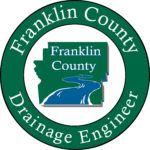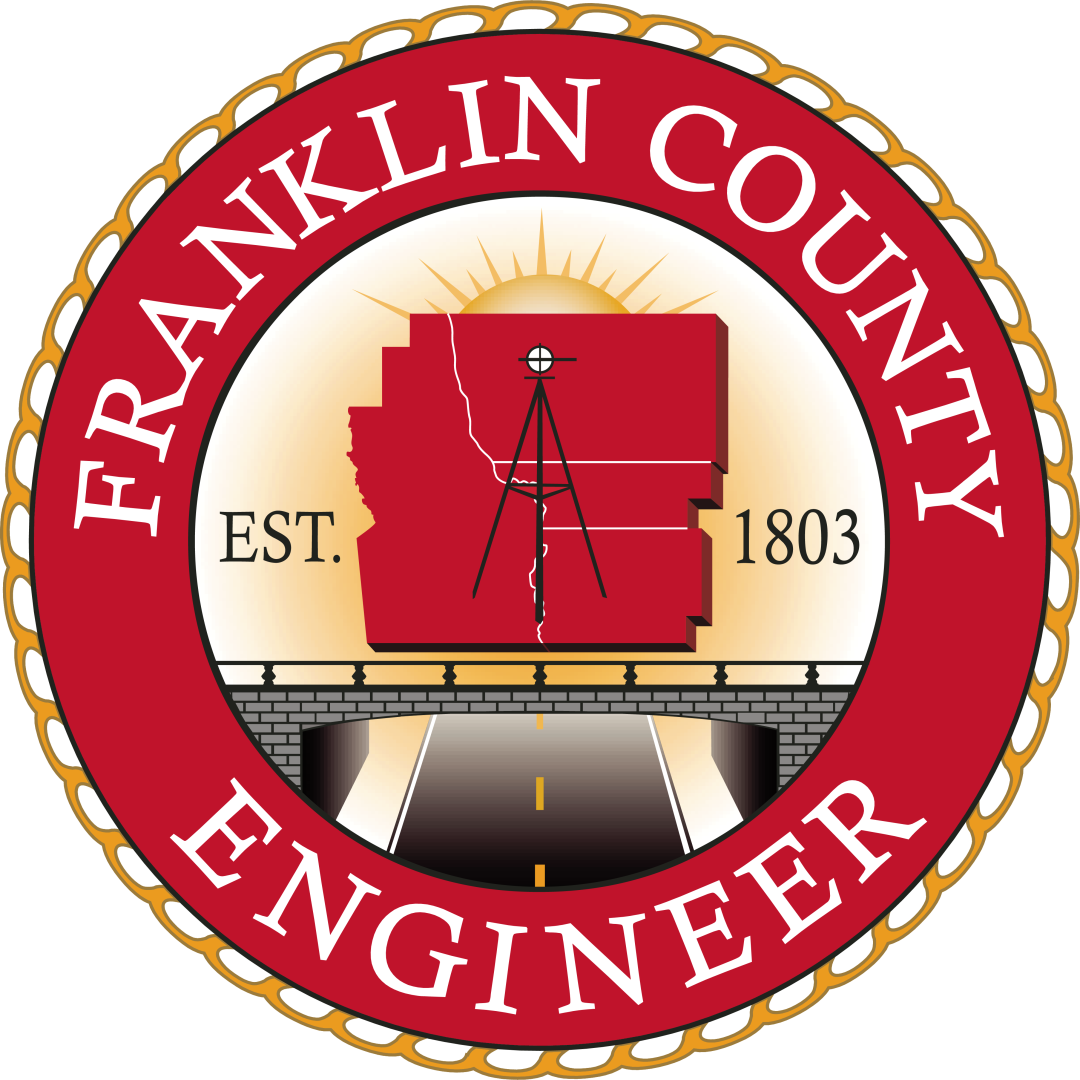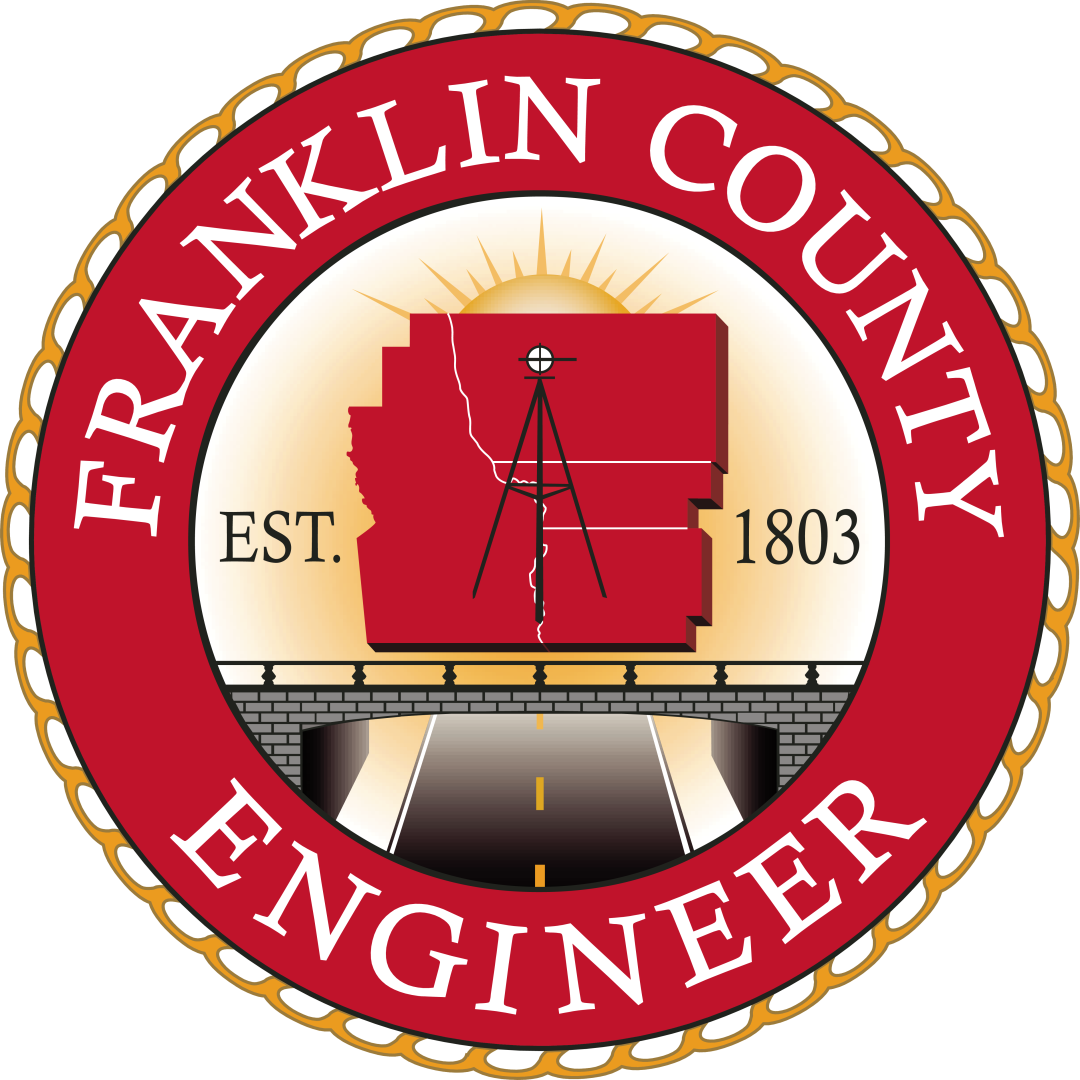Sediment and Erosion Control

Send us your comments: erosion@franklincountyengineer.org
Franklin County Engineer capital improvement projects are built in accordance with the National Pollutant Discharge Elimination System (NPDES) and specifically the Ohio Environmental Protection Agency’s Authorization for Storm Water Discharge Associated with Construction Activity as regulated by the NPDES. Additional federal, state, and local rules pertaining to storm water pollution shall also apply.
Contractors are required to co-sign the Ohio EPA permit and Notice of Intent (NOI) as stipulated by the NPDES. It is the prime contractor’s responsibility to notify subcontractors of the Ohio EPA requirements, have them sign affidavits that that they understand those requirements, and furnish copies to the county engineer’s office before their associated work begins.
A prime contractor shall submit a Storm Water Pollution Prevention Plan (SWP3) to the county engineer’s office for its approval within 20 days after the award of the construction contract. The SWP3 shall be prepared by a professional experienced in the design and implementation of standard erosion and sediment controls and storm water management practices addressing all phases of construction. The SWP3 shall incorporate at a minimum “Part III, Section G SWP3 Requirements of the Ohio EPA, Authorization for Storm Water Discharge Associated with Construction Activity under NPDES.
EPA Storm Water Pollution Prevention Plan (SWP3) Checklist
The county engineer’s office shall also require a description of all Best Management Practices (BMPs) and installation practices a contractor plans to implement. The prime contractor shall inform the county engineer’s office in writing of all amended activities to the SWP3 whenever there is a change in design, construction, operation, or maintenance that has a significant effect on the potential for the discharge of pollutants to Ohio’s waters, or if the SWP3 proves to be ineffective in achieving the general objectives of controlling pollutants in storm water.
It is the responsibility of the prime contractor to evaluate all sediment and erosion control activities to ensure that no turbid discharge is released. They shall also be fully responsible for all compliance activities for all areas outside of the designed construction site. These areas include locations where soils are stockpiled, excavated for the purpose of fill, or disposed of as fill outside of the work limits. The prime contractor shall file an NOI with the Ohio EPA regarding these off-project areas and furnish copies to the county engineer’s office.
The county engineer’s office will closely monitor the implementation of the SWP3 with emphasis on construction and continued maintenance of BMPs. We will provide the prime contractor notice of any deficiencies found during required inspections as prescribed by the general permit. Our inspection of sediment and erosion controls on the site will occur at least once every seven days and within 24 hours after any storm event greater than one-half inch of rain per 24-hour period. If there is a deficiency, the prime contractor shall make necessary repairs within 24 hours of notification or be assessed liquidated damages and other penalties in accordance with Ohio Department of Transportation (ODOT) policies.
It is our goal to meet all Ohio EPA, ODOT and local water pollution prevention standards for construction sites. The prime contractor shall submit to us a description of the BMPs that will be employed prior to the start of work, and we reserve the right to deny implementation of any BMP that is determined to be non-effective prior to or during construction activities.





